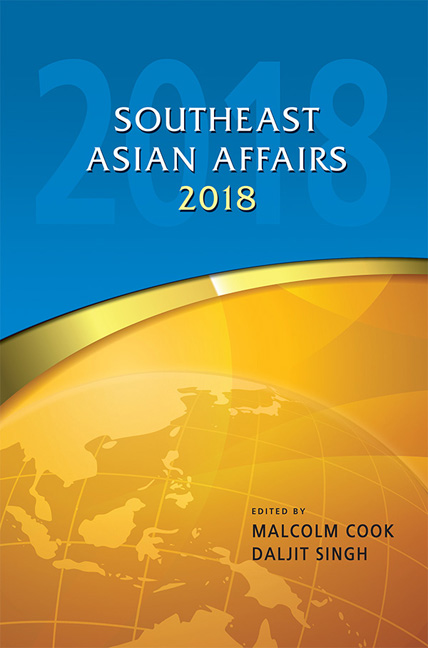On the Right Track? The Lao People's Democratic Republic in 2017
from LAOS
Published online by Cambridge University Press: 08 June 2019
Summary
The year 2017 was an important one to assess the performance of the new government of Laos. Prime Minister Thongloun Sisoulith tackled key problems of Lao governance and economy — most notably corruption and illegal logging — earning him both domestic and international approval. However, Laos is still facing numerous socio-economic challenges such as weak legal institutions, poverty, environmental degradation, and a civil society subdued.
According to the 8th Five-Year National Socio-Economic Development Plan (2016–20), Lao economic politics is focused on graduating from the status of being a least developed country (LDC), not least through mega projects like hydropower dams, mines and large-scale infrastructure projects — negative social and ecological side effects notwithstanding. China and many ASEAN countries compete in large-scale investment in these fields. The Lao–Chinese railway linking Kunming with Vientiane is a case in point.
This chapter gives an overview of political and economic tendencies in the Lao PDR at the beginning of the new five-year cycle.
The Tenth Party Congress and its Aftermath
The year 2017 saw widely noticed political decisions of the new Government of Laos. The government addressed key challenges mentioned in the 8th Five-Year National Socio-Economic Development Plan (2016–20), such as the fight against corruption, illegal logging, and uncontrolled investment. This raised cautious hopes for more efficient and transparent governance. Prime Minister Thongloun Sisoulith gained a public image of a pragmatic and responsible politician. However, Laos still faces many problems: poverty and low education, environmental degradation, pressure on civil society, and the negative ecological and social impacts of hydropower dams and mining projects.
Meanwhile, the dynamic economic sector — with a growth of slightly below seven per cent in 2017 — dominated the Lao news and the political agenda. Largescale investment projects such as hydropower dams, coal plants and, not least, the huge Lao–Chinese railway project indicate Laos’ ongoing reliance on natural resources and increasing regional connectivity. The high social and environmental costs of the government's obsession with such mega projects became evident in 2017 as well. This chapter gives an overview of political and economic tendencies — and their social implications — in the Lao PDR.
- Type
- Chapter
- Information
- Southeast Asian Affairs 2018 , pp. 169 - 184Publisher: ISEAS–Yusof Ishak InstitutePrint publication year: 2018



